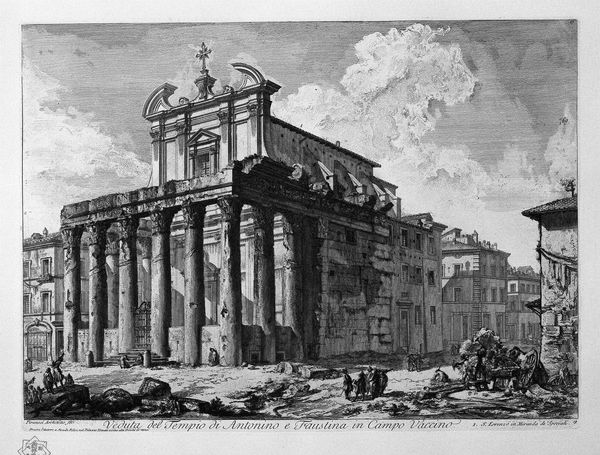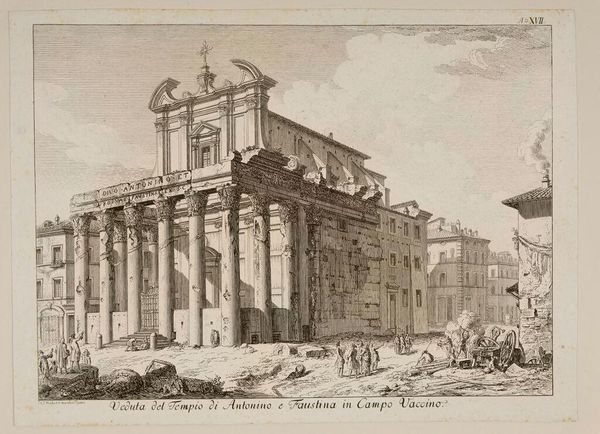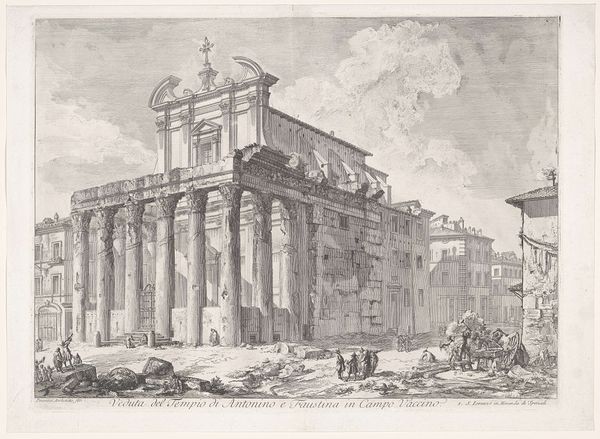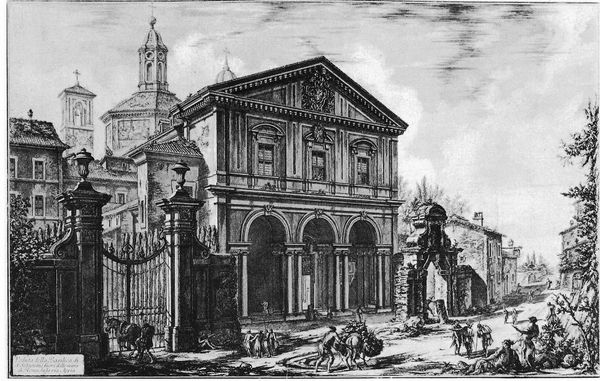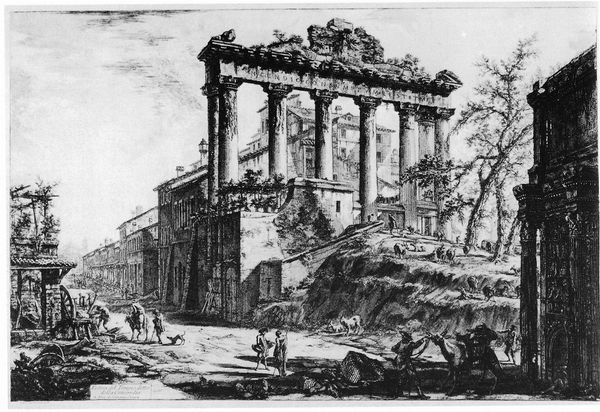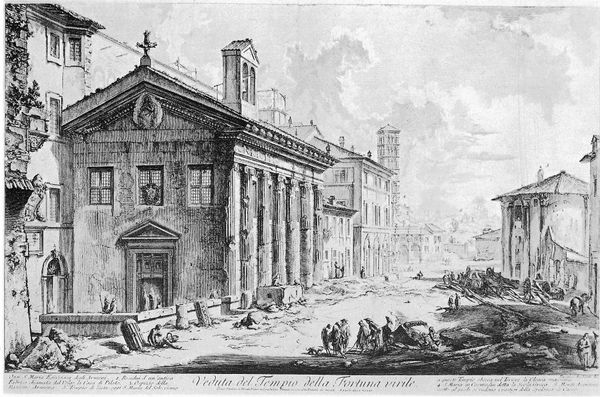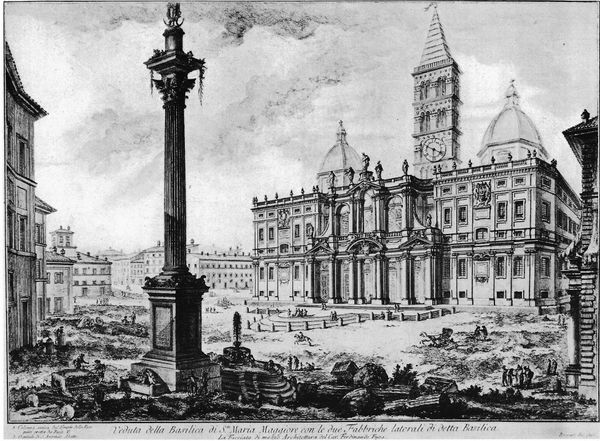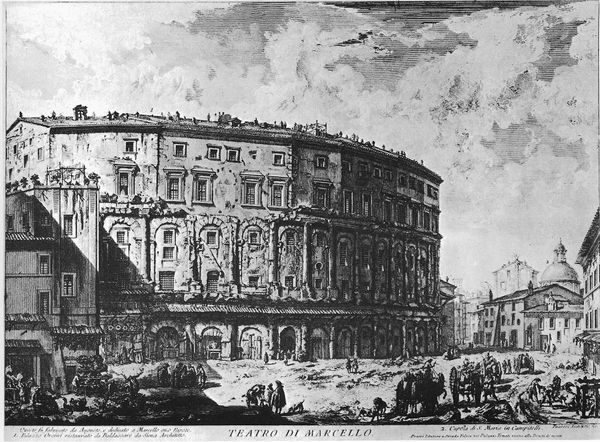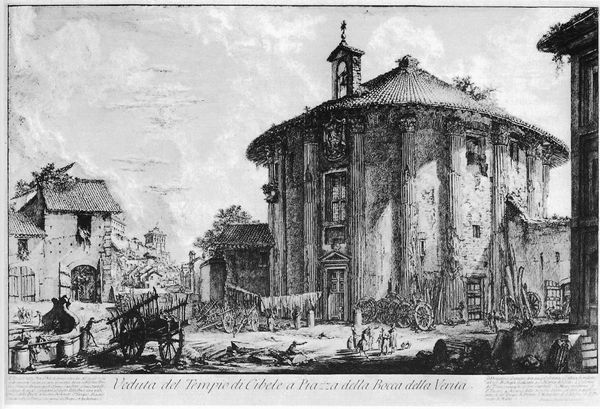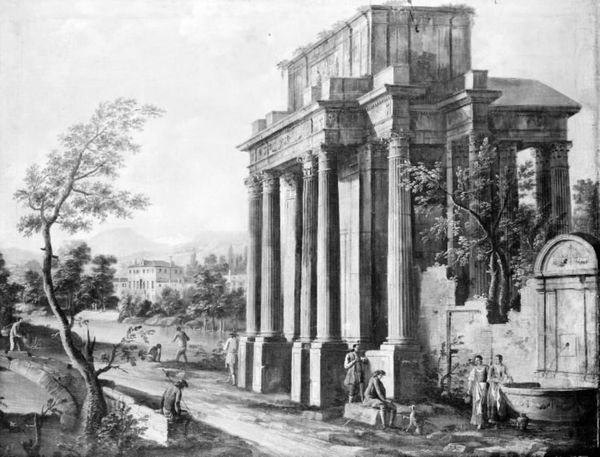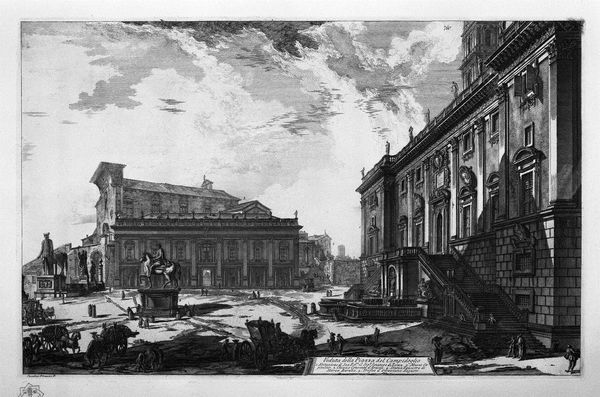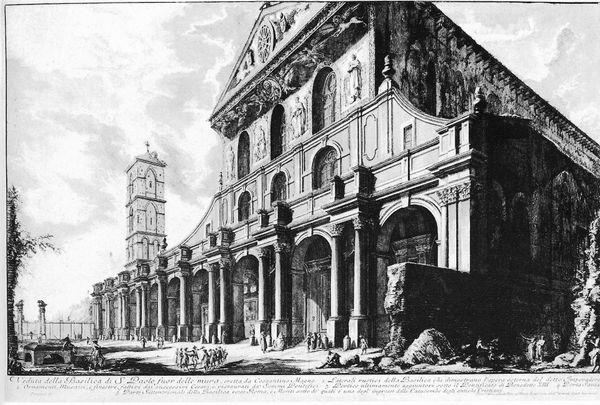
print, etching, architecture
#
architectural landscape
# print
#
etching
#
landscape
#
romanesque
#
column
#
arch
#
cityscape
#
history-painting
#
architecture
Copyright: Public domain
Giovanni Battista Piranesi’s "Vedute di Roma" is constructed with etched lines that capture the grandeur and decay of Roman architecture. The composition is dominated by the Temple of Antoninus and Faustina, a study in contrasts. Note how Piranesi meticulously renders the temple’s imposing columns and the rough texture of its aged surfaces, an almost tactile contrast to the smoothness of the sky and the distant buildings. The linear precision in the architecture underscores the structure's solidity, while the irregular patches evoke the passage of time and the processes of ruination. The human figures, dwarfed by their environment, emphasize the monumentality. The use of light and shadow creates depth and accentuates the play between ideal form and historical reality. Piranesi’s vision destabilizes our understanding of perfection and decay, inviting us to contemplate the structural dichotomy. Consider how the artist uses line and texture to establish a visual and intellectual dialogue, presenting Rome not just as a place, but as an ongoing historical and aesthetic debate.
Comments
No comments
Be the first to comment and join the conversation on the ultimate creative platform.
